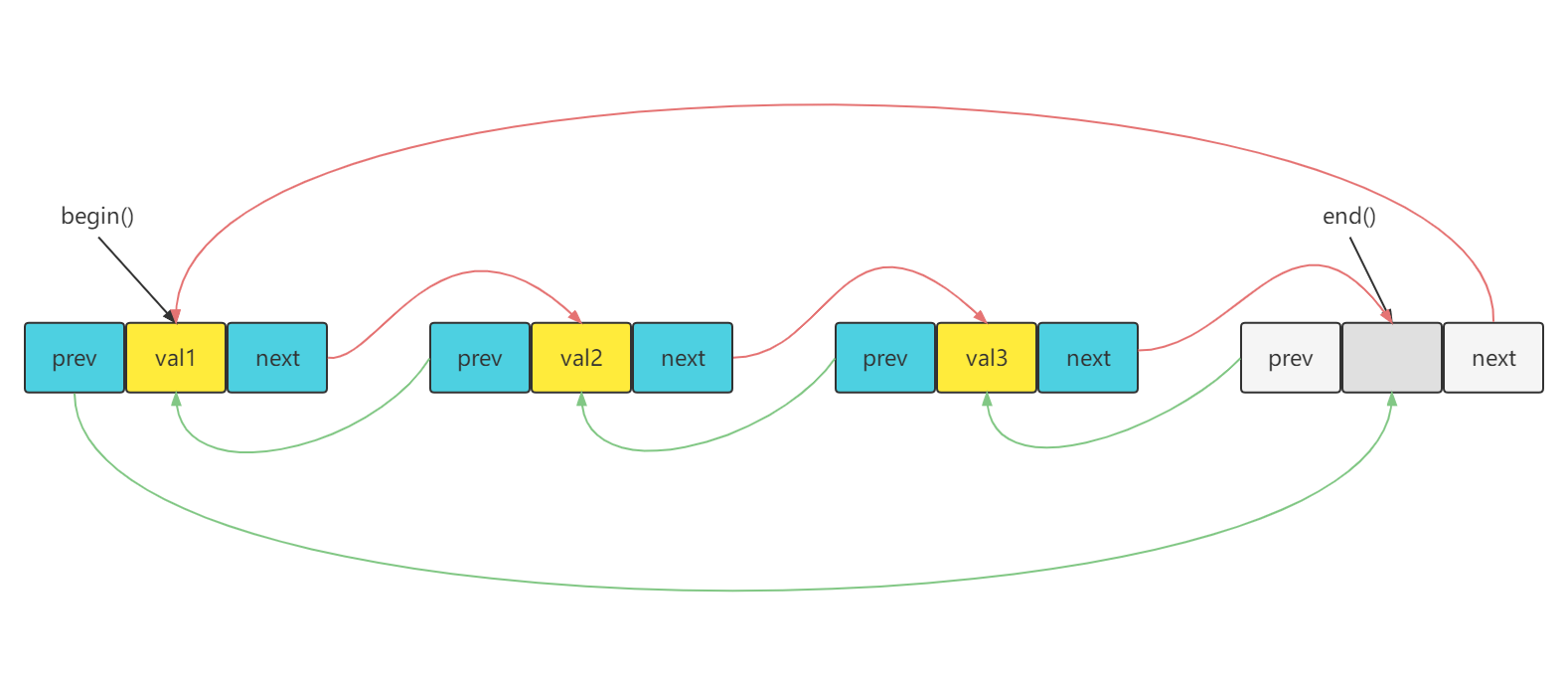前言
提示:list, begin(), end(), 循环链表
本文将探索SGI STL中list容器的循环存储结构,可以在list头文件中确认STL为Silicon Graphics Computer Systems, Inc.(SGI)版本。
提示:以下是本篇文章正文内容,下面案例可供参考
一、list是什么?
list是一种物理存储单元上非连续的存储结构,数据元素的逻辑顺序是通过链表中的指针链接实现的。
链表的组成:链表由一系列结点组成;
结点的组成:一个存储数据元素的数据域,一个存储上一个结点地址的指针域,一个存储下一个结点地址的指针域。
在此SGI STL中的list容器不仅是一个双向链表,还是一个循环链表。由于不同版本的STL对于list的实现不尽相同,所以这里希望读者能明确自己的STL版本,当然对于其他版本的STL也可以自己进行探索。
二、list循环存储结构
1. 代码
代码如下(示例):
#include <iostream>
#include <list>
using namespace std;
int main()
{
list<int> l;
l.emplace_back(1);
l.emplace_back(2);
l.emplace_back(3);
list<int>::iterator tail = --l.end();
list<int>::iterator prev_iter_of_begin = --l.begin();
list<int>::iterator next_iter_of_end = ++l.end();
cout << "The previous iterator of begin() is the same as tail: " << (prev(l.begin()) == tail ? "true" : "false") << endl;
cout << "The next iterator of tail is the same as begin(): " << (next(tail, 1) == l.begin() ? "true" : "false") << endl;
cout << "The previous iterator of begin() is the same as end(): " << (prev_iter_of_begin == l.end() ? "true" : "false") << endl;
cout << "the next iterator of end() is the same as begin(): " << (next_iter_of_end == l.begin() ? "true" : "false") << endl;
return 0;
}
The previous iterator of begin() is the same as tail: false
The next iterator of tail is the same as begin(): false
The previous iterator of begin() is the same as end(): true
the next iterator of end() is the same as begin(): true
2. 分析
从上面的代码结果可以看出,list的尾部节点(元素值为3)的下一个节点地址的指针域是指向end(),并非是begin(),而end()节点的下一个节点地址的指针域才是指向begin()。同理,begin()的上一个节点地址指针域是指向end(),并非是尾部节点(元素值为3)。
这个结论可以绘制如下的list双向循环存储结构,这与网络上部分展示的list双向循环存储结构图是不同的!!!

总结
文章简单介绍了list的循环存储结构。文章主要是针对SGI STL的版本进行探索,并绘制了list的实际循环存储结构,因为笔者在开发过程中发现网络上的list循环存储结构图给我带来了错误的结论,所以在此介绍了自己的验证结果。
希望您能仔细阅读,因为发现和指正文章中的不足之处,是对我莫大的提升,谢谢!